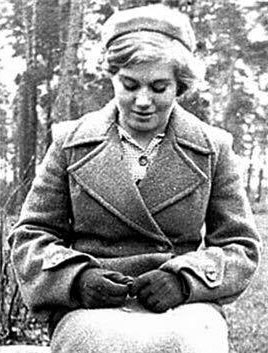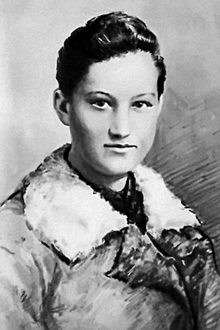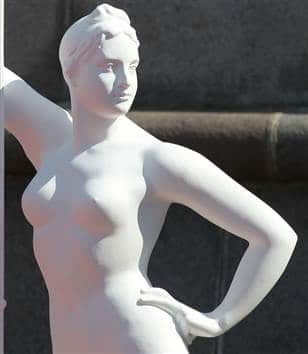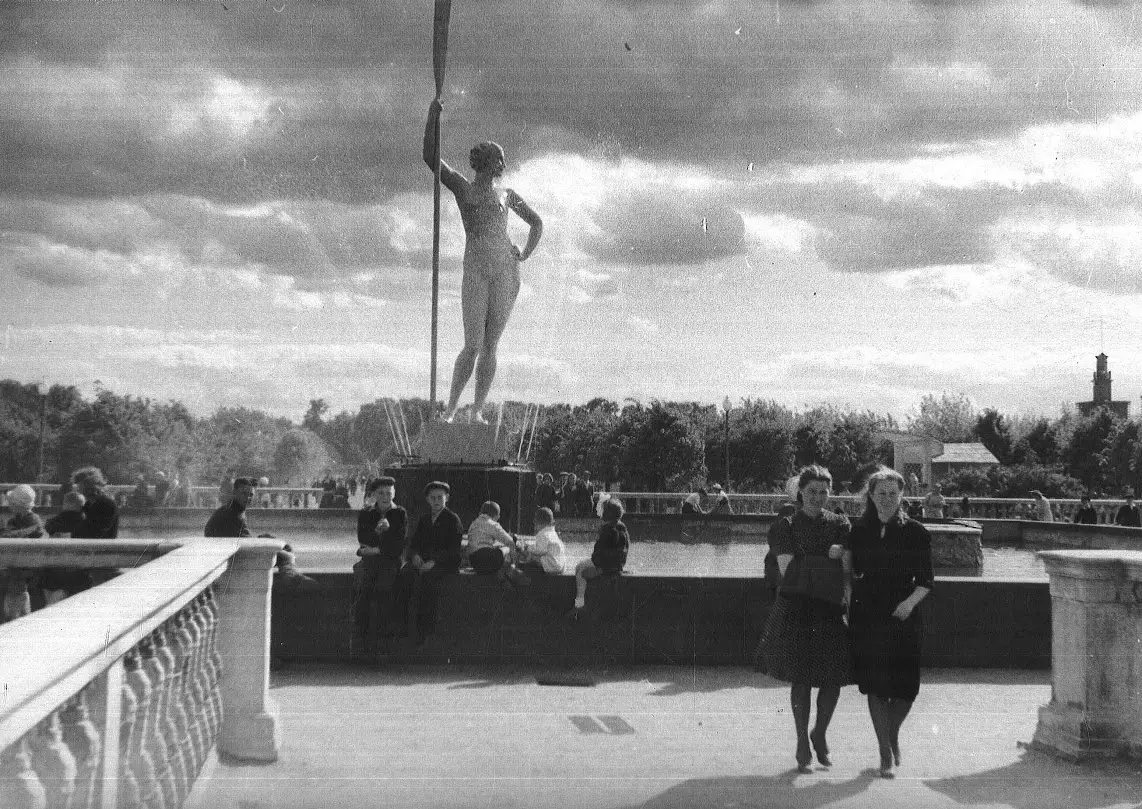
The Girl with an Oar sculpture was re-introduced to Gorky Park in 2011. Originally installed in 1935, it was then a controversial piece of art, and endured criticism, a likely theft or vandalism, revision, and then destruction by Nazi bombs. Everyone associated with the statue died the year the statue was destroyed: 1941. The statue left a memorable impression in Gorky Park, however. It was a bold and passionate take on the “Girl with an Oar” theme, which was eventually displayed dispassionately in many parks across the USSR, becoming as common and unremarkable as the thousands of Lenins were mass-produced at that time. Further, the incredible histories of the girls who modeled for the statue give the statue today a whole new meaning.
When first installed in front of Gorky Park in 1935, the statue was surrounded by fountains, and it was meant to be a symbol of the park and a tribute to athletic beauty. However, at the time, Socialist Realism was rapidly taking hold of the Soviet art industry and many critics derided the statue. It showed a young girl with a modern haircut, standing naked confidently and perhaps even a bit playfully in front of one the USSR’s most public places. It was deemed too sexy and too vulgar. The original was relocated to a park in Ukraine and later was “lost” (perhaps destroyed by unhappy critics or vandalized). Gorky Park received a revised edition of the statue in 1936. The new version, by the same artist, more closely abided by the neoclassical dictates of Socialist Realism. It was colder and more formal, but was still deemed too vulgar and was criticized publicly.
In October of 1941, WWII was well underway and the Battle of Moscow began. The statue (the second version) in Gorky Park became one of many casualties of the Nazi bombing raids by the end of the year. It would not be replaced by the Soviet authorities.


1941 was a fated year for everyone involved with the statue. The model for the original 1935 version was Vera Voloshin, an athlete and sharpshooter. The model for the second version was Zoya Kosmodemyanskaya, a gymnast. Both girls fought against the Nazis in WWII and both gained reputations as fighters and charismatic leaders of the partisans. Both girls were eventually captured by the Nazis, brutally tortured, and killed just a few miles from each other, on the same day: November 29, 1941.

Zoya was posthumously awarded “Hero of the USSR,” becoming the first woman in the Great Patriotic War to receive that award. Her remains were eventually transferred to Novodevichy Cemetery in Moscow, a place where some of Russia’s greatest artists, scientists, and political leaders are interred. Vera was posthumously awarded the Order of the Patriotic War, 1st degree. She was also recognized again on May 6, 1994, when she was posthumously awarded the title of Hero of the Russian Federation.
The sculptor of both versions, Ivan Shadr, also died in 1941 of illness. His plaster model of the original sculpture was bronzed by his wife and later kept safe in the archives of the Tretyakov Gallery in Moscow.
The bronze was rediscovered in 2010 and a new 8-foot-tall version of the sculpture was recreated and reinstalled in Gorky Park in 2011. Given its history, the new statue can be said to be much more than symbol of beauty and athletic achievement – it is a symbol of the history of Russia and of the courage and perseverance that the Russians consider to be very much a part of their national character.







